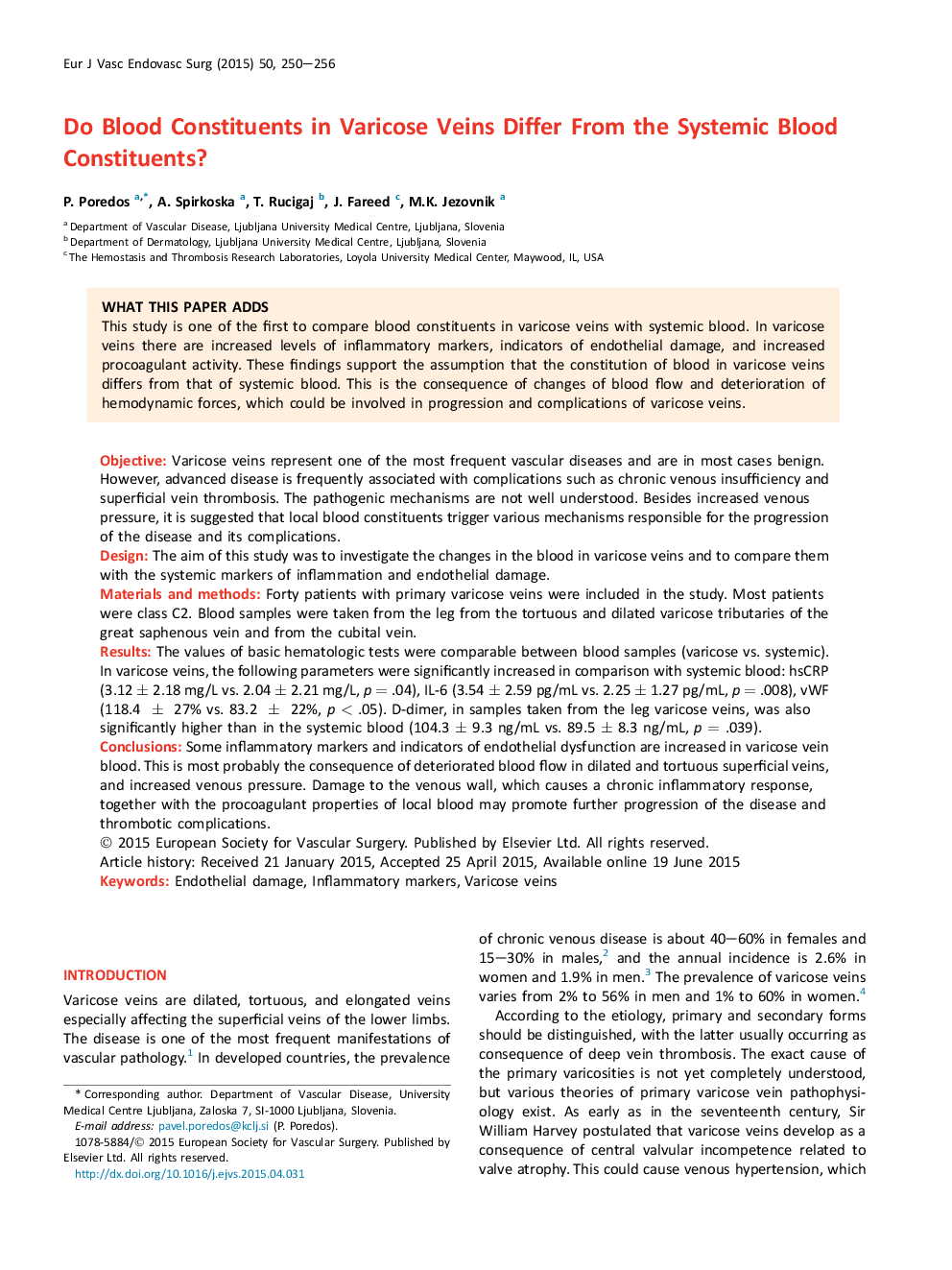| کد مقاله | کد نشریه | سال انتشار | مقاله انگلیسی | نسخه تمام متن |
|---|---|---|---|---|
| 2911833 | 1575439 | 2015 | 7 صفحه PDF | دانلود رایگان |
ObjectiveVaricose veins represent one of the most frequent vascular diseases and are in most cases benign. However, advanced disease is frequently associated with complications such as chronic venous insufficiency and superficial vein thrombosis. The pathogenic mechanisms are not well understood. Besides increased venous pressure, it is suggested that local blood constituents trigger various mechanisms responsible for the progression of the disease and its complications.DesignThe aim of this study was to investigate the changes in the blood in varicose veins and to compare them with the systemic markers of inflammation and endothelial damage.Materials and methodsForty patients with primary varicose veins were included in the study. Most patients were class C2. Blood samples were taken from the leg from the tortuous and dilated varicose tributaries of the great saphenous vein and from the cubital vein.ResultsThe values of basic hematologic tests were comparable between blood samples (varicose vs. systemic). In varicose veins, the following parameters were significantly increased in comparison with systemic blood: hsCRP (3.12 ± 2.18 mg/L vs. 2.04 ± 2.21 mg/L, p = .04), IL-6 (3.54 ± 2.59 pg/mL vs. 2.25 ± 1.27 pg/mL, p = .008), vWF (118.4 ± 27% vs. 83.2 ± 22%, p < .05). D-dimer, in samples taken from the leg varicose veins, was also significantly higher than in the systemic blood (104.3 ± 9.3 ng/mL vs. 89.5 ± 8.3 ng/mL, p = .039).ConclusionsSome inflammatory markers and indicators of endothelial dysfunction are increased in varicose vein blood. This is most probably the consequence of deteriorated blood flow in dilated and tortuous superficial veins, and increased venous pressure. Damage to the venous wall, which causes a chronic inflammatory response, together with the procoagulant properties of local blood may promote further progression of the disease and thrombotic complications.
Journal: European Journal of Vascular and Endovascular Surgery - Volume 50, Issue 2, August 2015, Pages 250–256
